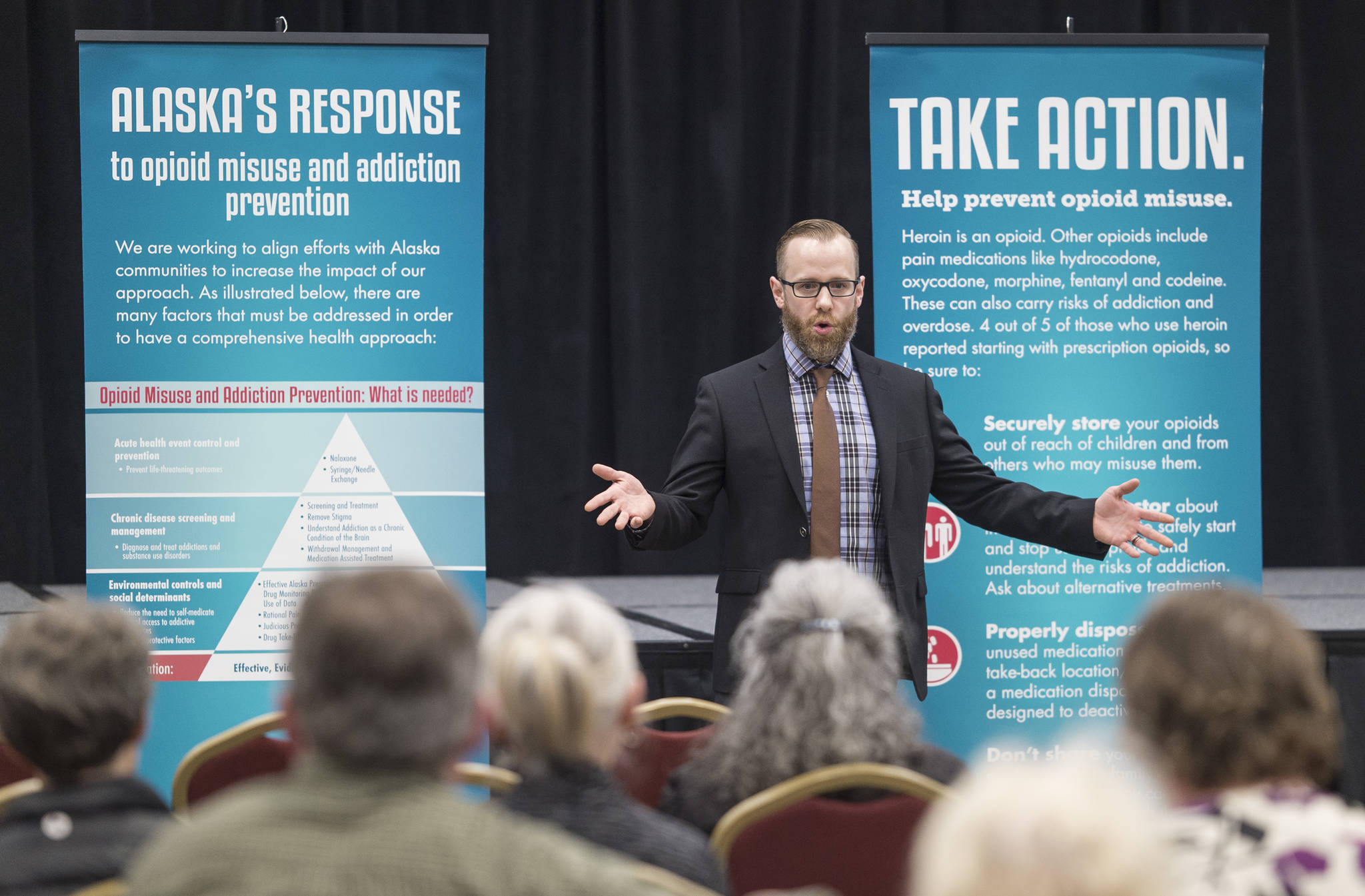Another opioid overdose death. Another drug-related crime. Another billion dollars spent on ineffective treatments. News about the opioid crisis keeps getting worse. Simple solutions haven’t changed the epidemic’s course. The number of deaths has continued to increase, driven by an influx of illicit fentanyl sold as heroin and counterfeit pills and other illicit drugs like methamphetamine and cocaine often contaminated with fentanyl. To effectively treat this evolving public health crisis, we must recognize opioid addiction for what it is: (1) a life-threatening emergency, (2) a chronic disease, and (3) a preventable condition.
First, opioid addiction is an emergency. Just as providing first aid for cardiac arrest requires an automatic external defibrillator, and first aid for severe bleeding requires a tourniquet, first aid for an opioid overdose requires naloxone. In 2017, Gov. Bill Walker declared the state’s opioid epidemic a public health emergency and made naloxone more readily available to all Alaskans. The U.S. Surgeon General’s recent Health Advisory calls for increasing the drug’s public availability: too often, it is not available when needed. And just as other emergencies follow first aid with immediate medical care, the same strategy should be used for opioid addiction.
Opioid addiction is a chronic disease that requires ongoing care. Addiction rewires parts of the brain that process reward and motivation, resulting in inexplicably self-destructive behavior. Like other chronic diseases, opioid addiction can be managed: people who’ve experienced addiction can return to successful and productive lives. Yet, only one in 10 people with opioid addiction is receiving treatment. Why? A lack of treatment providers is one barrier. An equal challenge is stigma — for too long, addiction has been considered a moral failing or a habitual series of “bad choices.” Drug experimentation is a bad choice, but no one chooses a life hijacked by opioid addiction any more than a smoker chooses lung cancer.
Another significant barrier to treating opioid addiction: misunderstanding Medication Assisted Treatment (MAT). When combined with psychological and social support, MAT is the most effective path to recovery. Yet too many people dismiss MAT as exchanging one addiction for another. Just as people with Type II diabetes or asthma do best with a combination of medication and lifestyle changes, a multipronged approach that includes medication is the best way to treat opioid addiction. And like other chronic diseases, addiction requires long-term management. Also, many do not know that the risk of overdose increases after a period of abstinence. Thus, a few weeks in detox is not enough for cure without further treatment, and can lead to relapse or death.
Finally, opioid addiction is preventable. Prevention requires addressing supply and demand. On the supply side, sound pain management strategies will result in better pain control, fewer people becoming addicted to prescription opioids, and fewer painkillers sitting in our medicine cabinets for others to misuse. Interdiction by law enforcement can also reduce the amount of illicit drugs entering the market.
However, addressing the supply side alone will not solve this crisis. We have to address the demand for opioids. This means confronting the thorny issues that make opioids an attractive escape for many, including unemployment, homelessness, poverty, boredom and racism. It will require learning how to prevent and mitigate the lifelong effects of adverse childhood experiences, and building resilient people and communities. Investing in the wellness of our children will ensure America in 2035 has a healthy, educated and productive workforce.
How can we possibly do all this? An Iñupiaq whaler recently offered me his insight on the opioid crisis by asking, “How do you eat a whale?” As I considered this very Alaskan version of an old saw about elephants, he explained: One person does not go into the sea to take a whale. One person does not butcher a 100-ton whale. And, no, you do not eat a whale one bite at a time.
You take and eat a whale as a community.
Isolation is the fertile ground in which addiction blossoms and our responses fail. It is time for us to come together as communities, tribes, and states, to call opioid addiction what it is, and respond accordingly.
• Dr. Jay C. Butler is Chief Medical Officer of Alaska Department of Health and Social Services, and immediate past president of the Association of State and Territorial Health Officials.

